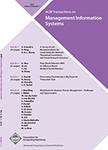版权所有:内蒙古大学图书馆 技术提供:维普资讯• 智图
内蒙古自治区呼和浩特市赛罕区大学西街235号 邮编: 010021

作者机构:Chinese Acad Sci State Key Lab Management & Control Complex Syst Inst Automat Beijing Peoples R China Univ Arizona Dept Management Informat Syst Tucson AZ 85721 USA Univ Virginia McIntire Sch Commerce Charlottesville VA 22903 USA Univ Penn Dept OPIM Philadelphia PA 19104 USA
出 版 物:《ACM TRANSACTIONS ON MANAGEMENT INFORMATION SYSTEMS》 (美国计算机学会管理信息系统汇刊)
年 卷 期:2013年第4卷第2期
页 面:8-8页
核心收录:
学科分类:08[工学] 0812[工学-计算机科学与技术(可授工学、理学学位)]
基 金:NNSFC [71025001, 91024030, 70890084, 71103180, 91124001] MOH [2013ZX10004218, 2012ZX10004801]
主 题:Recommender systems random walk sparsity social tagging
摘 要:Social tagging, as a novel approach to information organization and discovery, has been widely adopted in many Web 2.0 applications. Tags contributed by users to annotate a variety of Web resources or items provide a new type of information that can be exploited by recommender systems. Nevertheless, the sparsity of the ternary interaction data among users, items, and tags limits the performance of tag-based recommendation algorithms. In this article, we propose to deal with the sparsity problem in social tagging by applying random walks on ternary interaction graphs to explore transitive associations between users and items. The transitive associations in this article refer to the path of the link between any two nodes whose length is greater than one. Taking advantage of these transitive associations can allow more accurate measurement of the relevance between two entities (e.g., user-item, user-user, and item-item). A PageRank-like algorithm has been developed to explore these transitive associations by spreading users preferences on an item similarity graph and spreading items influences on a user similarity graph. Empirical evaluation on three real-world datasets demonstrates that our approach can effectively alleviate the sparsity problem and improve the quality of item recommendation.